Elyne Legarnisson
As an experience designer, Legarnisson strives to create experiences sparking curiosity, exploration and movement. Her work sits at the intersection between humans and environments, physical and digital, textures and motions, sensuality and systems. She provokes interactions between people, places and/or brands.
A curious individual from La Réunion (french island in the Indian Ocean), she has seven years experience in design, intertwined with eight years of design studies. These were concluded by an M.Arch at the Interaction Architecture Lab (Design for Performance and Interaction) with distinction from the Bartlett, UCL, London.
Passionate about human’s perception, emotions, and individual and social behaviours, Legarnisson finds empathy and systemic thinking to be at the source of her creativity. Interaction and spatial design comprise the two intertwined pillars of her practice. On one hand, she explores interactions between people and environments through the design of physical and virtual immersive experiences. Her latest piece, (un)Balance, was exhibited at Ars Electronica festival, Austria.
On the other hand, she designs spatial experiences for clients such as Microsoft, the NHS and Wembley Park. Through combinations of interiors and art installations, she infuses workplaces and healthcare environments with unique spatial identities and enhances staff and visitors experiences. Her latest role was Lead Designer at Acrylicize, London-based art and design studio. Motion plays a key role in her designs. Wether in the form of motion graphics, kinetics or programmed light installations, they enable her to induce movements, translate ideas and spark emotional responses.
Today, she is looking at channeling her practice to envision new everyday interactions with emotional health and social equity in mind.
(Un)Balance is an experience in XR (extended reality) that rethinks human-spaces interactions by foregrounding the notion of embodiment. It provokes body awareness, movement, and exploration.
Watch teaser video here and full project description there.
(un)Balance was developed at the Interactive Architecture Lab through iterations and prototypes tested, namely at Ars Electronica Festival 2018.
Here I will take you through this process which leads to the final experience design.
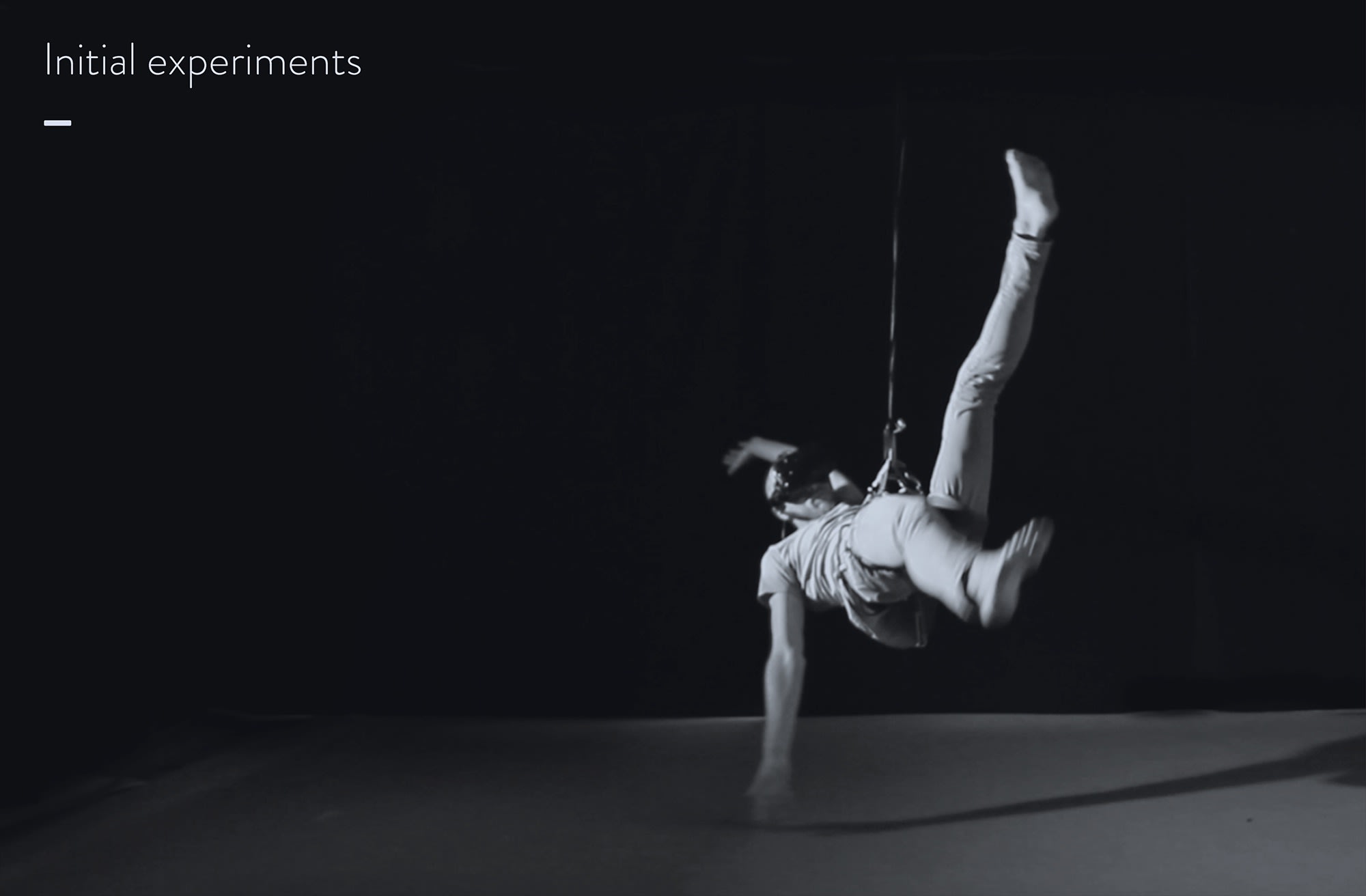
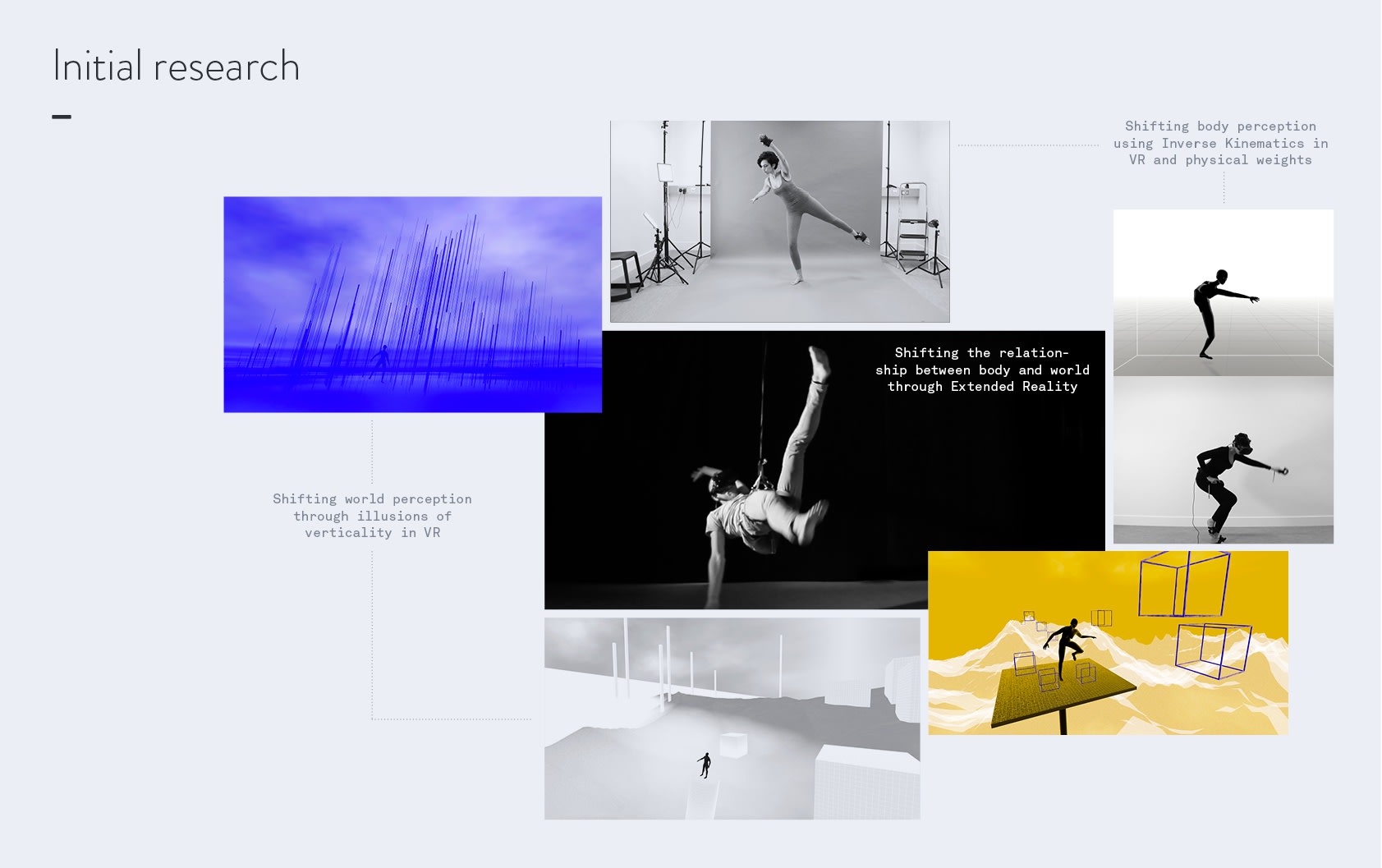
Initial research and experiments.
After experimenting with goal-oriented games, such as reaching and avoiding, I started exploring the relationships between movements and perception of the body, both physical and virtual, and the world’s perception. This led me to XR, where physical and virtual experiential tools are combined to create a new reality.
The notion of balance came as the node of the experience, to engage the whole body from the core to the extremities.
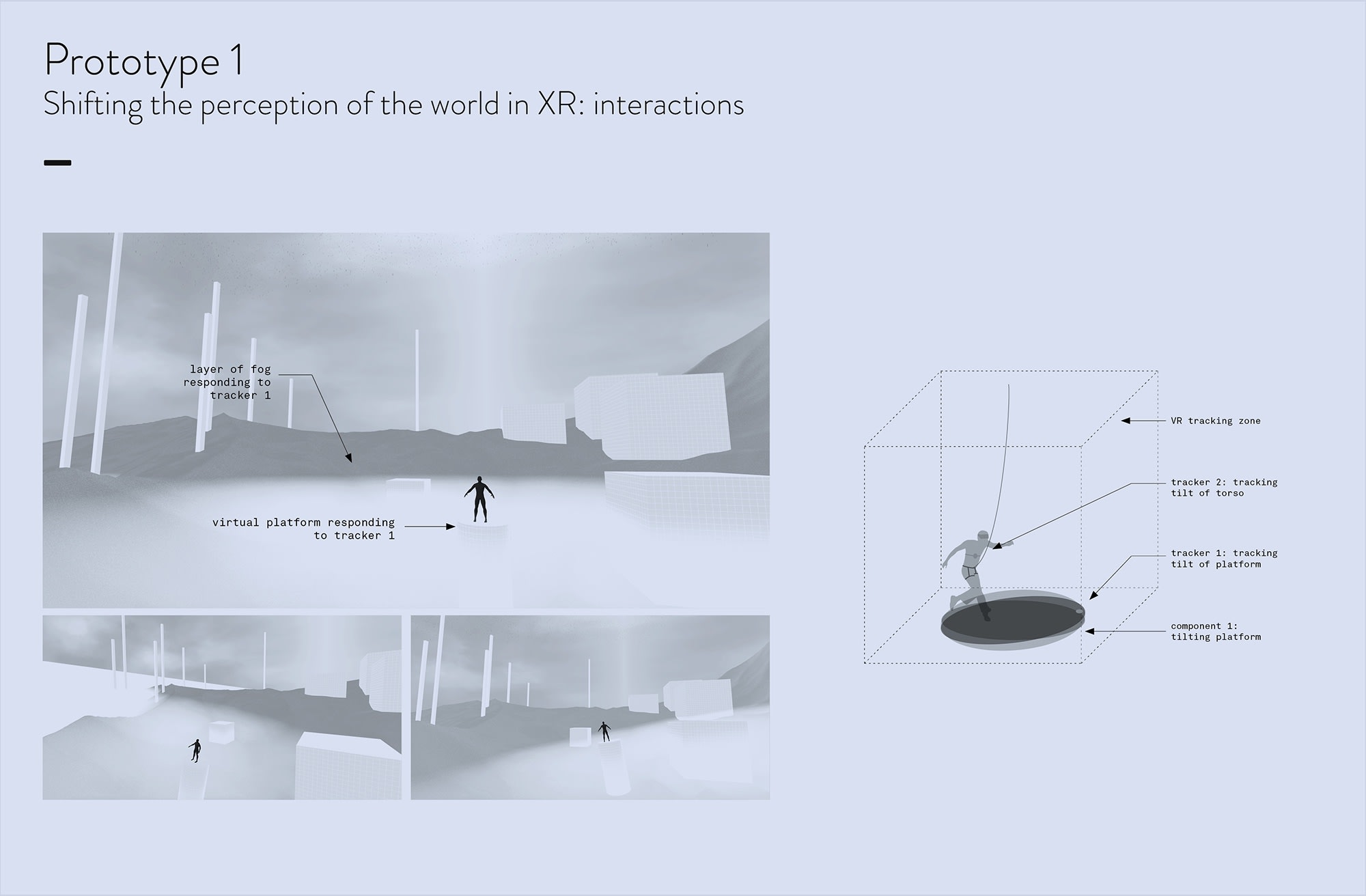
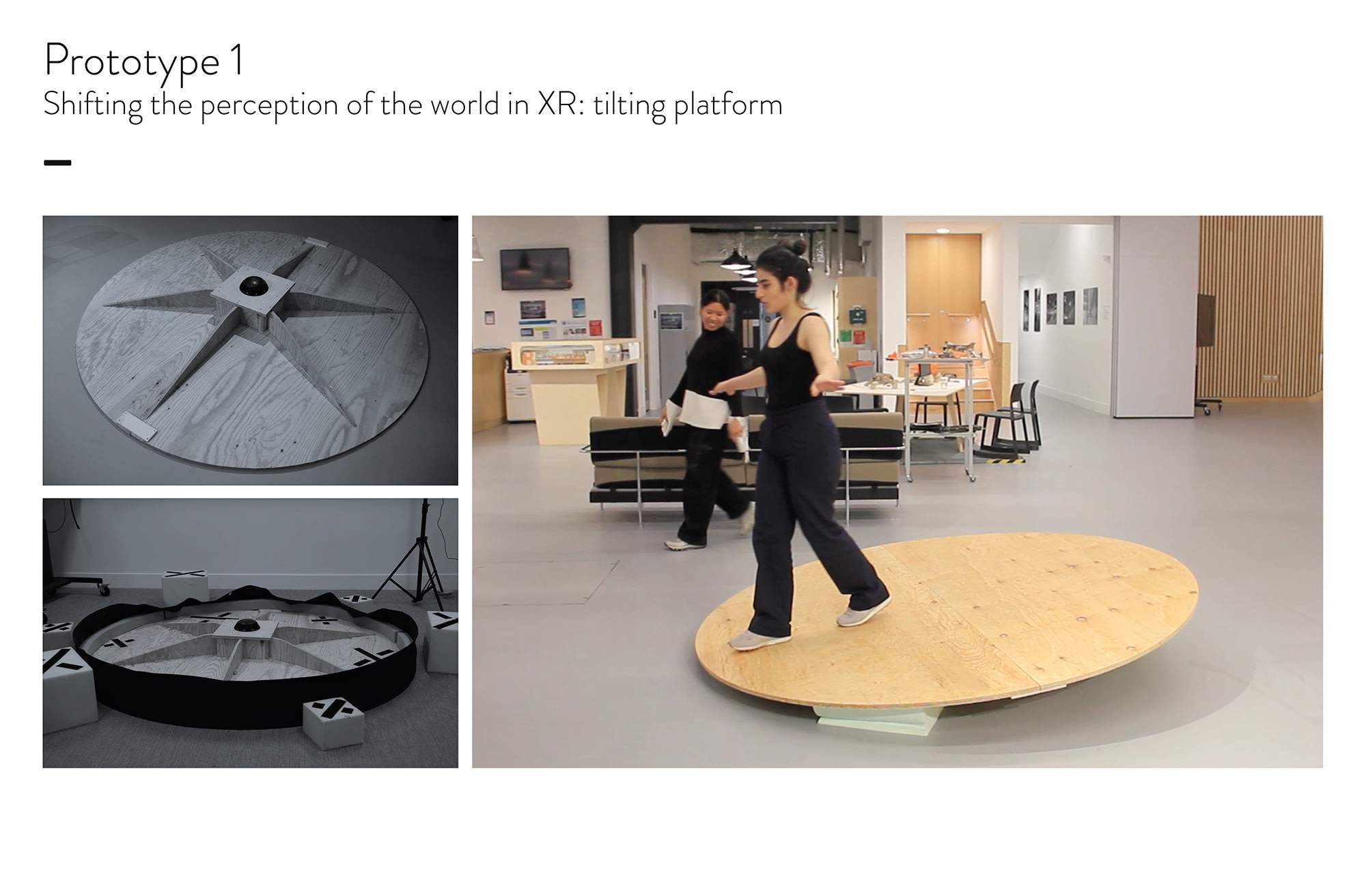
Prototype 1: Encouraging movements through shifting the perception of the world in XR
The first element of this experience is a tilting platform. Pivoting around its centre, it is cushioned by foam blocks. While the participant explores the world, causing the platform to tilt, the horizon of the world and rain like particles in the sky respond to the rotations of the forum. This resulted in the participant’s attention being directed outwards and slow to swift movements engaging mainly the bottom half of the body.
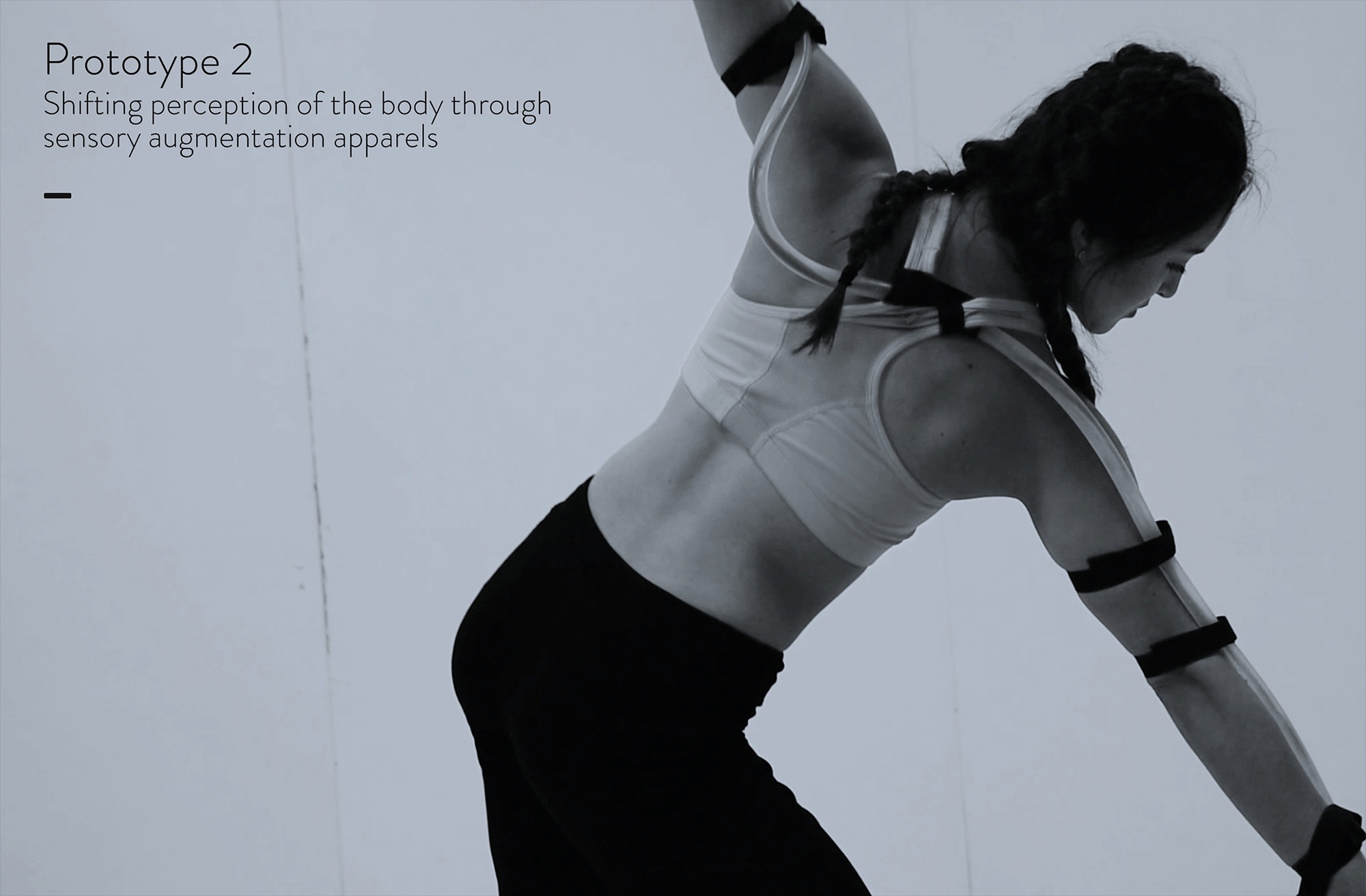
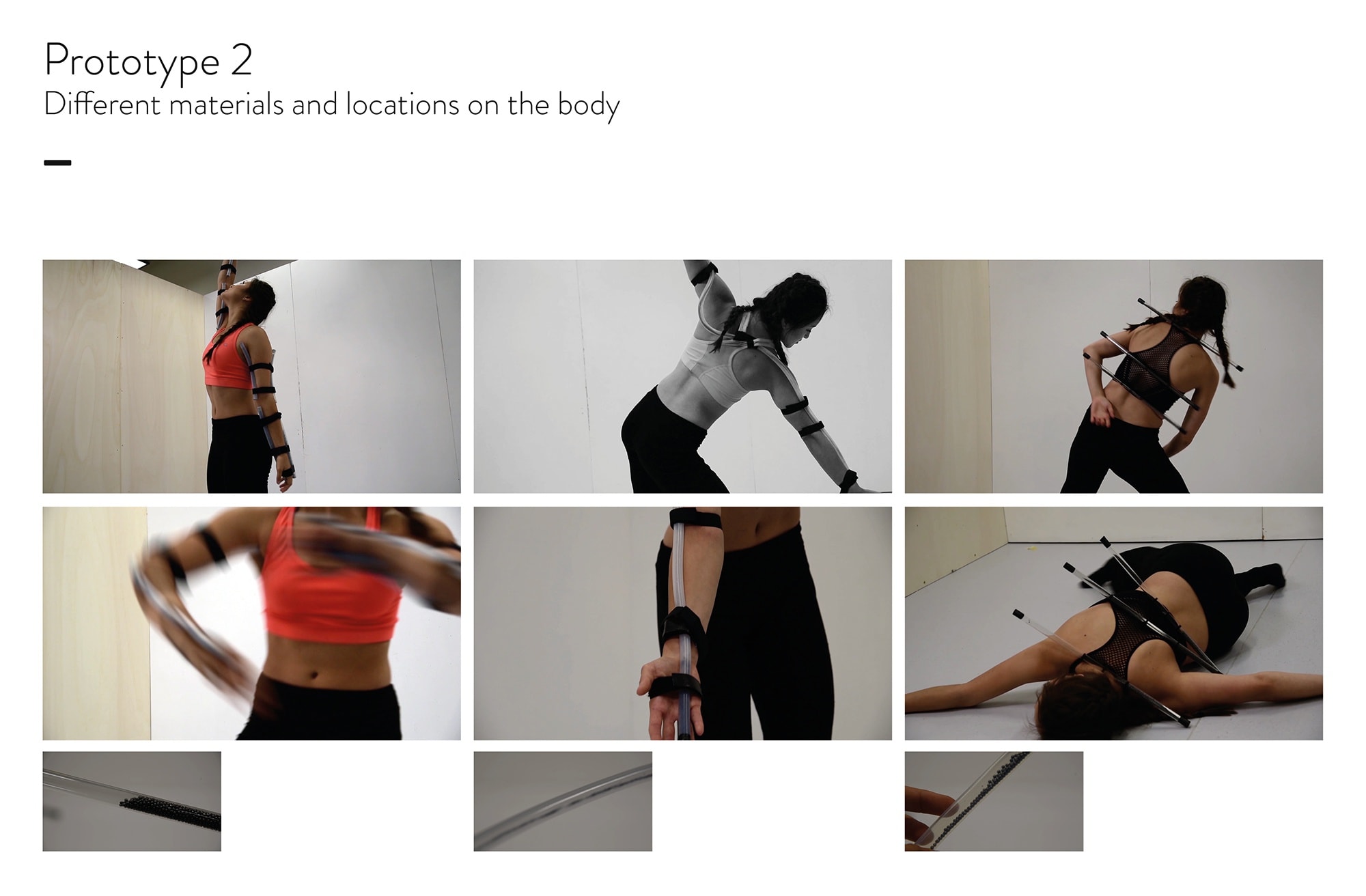
Prototype 2: Encouraging full body movements through augmenting the perception of the body in movement.
Following the prototype, I focused on ways to engage the upper part of the body in the experience. With this aim, I developed wearables allowing an additional weight to be displaced on the body while moving. Different materials were used, giving the wearables more. Or less linear responses. Various locations on the body were also tested. Working with dancer Tia Hockey, I analysed how different parameters influence movement exploration, encouraging other movement qualities in the form (curve or lines) and the speed and force (slow, impulsive, projective, pauses). The haptic sensation of the bead’s vibration and their sound feedback became an integral part of the design, adding layers of information guiding the participant. While the combination of the platform and apparels are successful with a professional mover, the same experience does not fully involve the widest more inhibited audience.
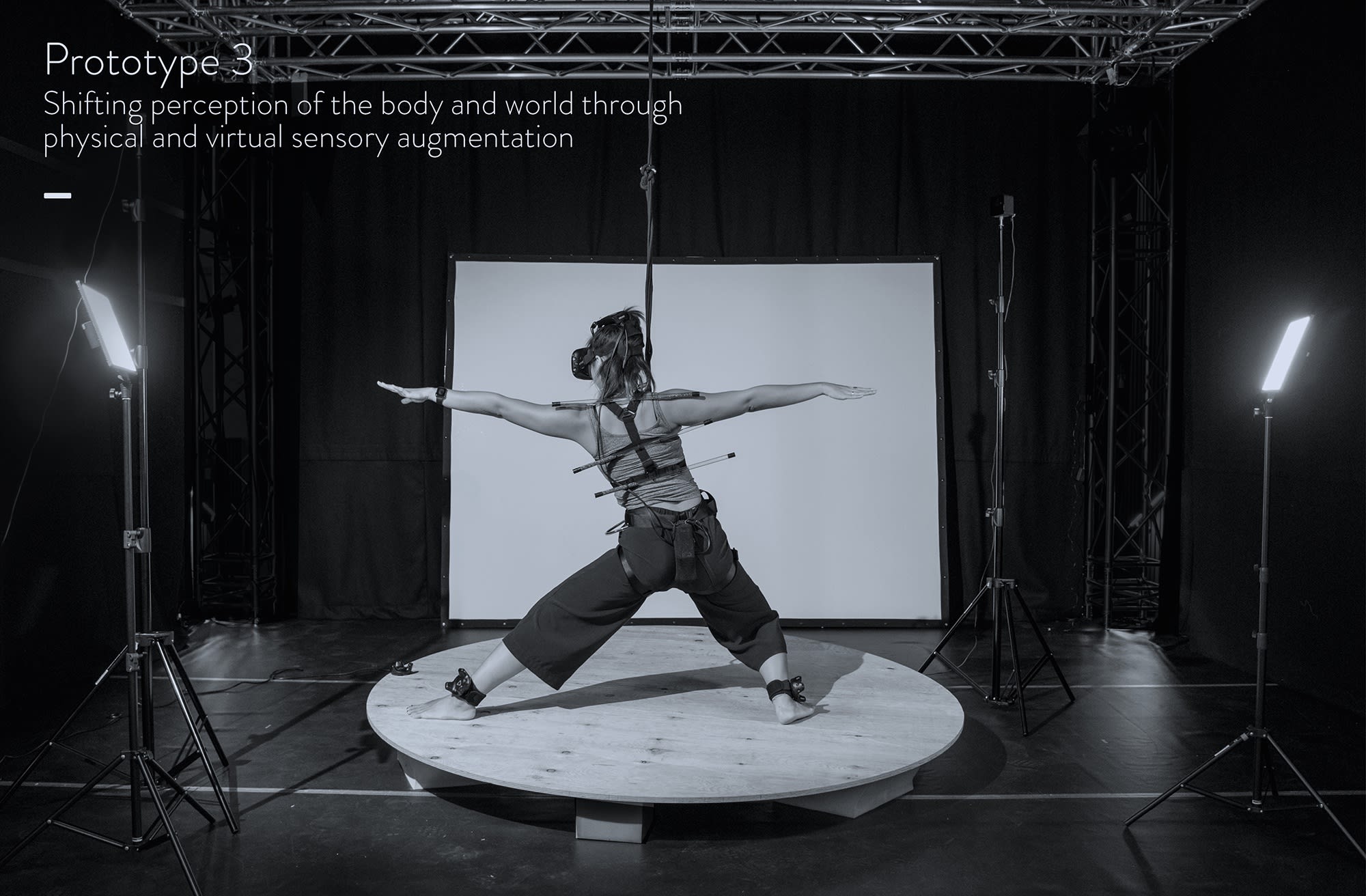

Prototype 3: Augmenting the perception of the body in movement through XR.
The third prototype looked at how to combine VR with the apparel and platform to allow a broader audience to get fully immersed in the experience. Here the body emits particles responding to the participant’s movements and rotations of the platform, visually supporting the behaviour of the physical beads shifting within the apparel. Bringing the experience to Ars Electronica allowed a large public to play and explore, from children to adults, people who had never experienced Vr to professionals. People started moving, from head to toe, slow to fast, exploring the limits of their bodies. The experience brought their attention mainly inward.
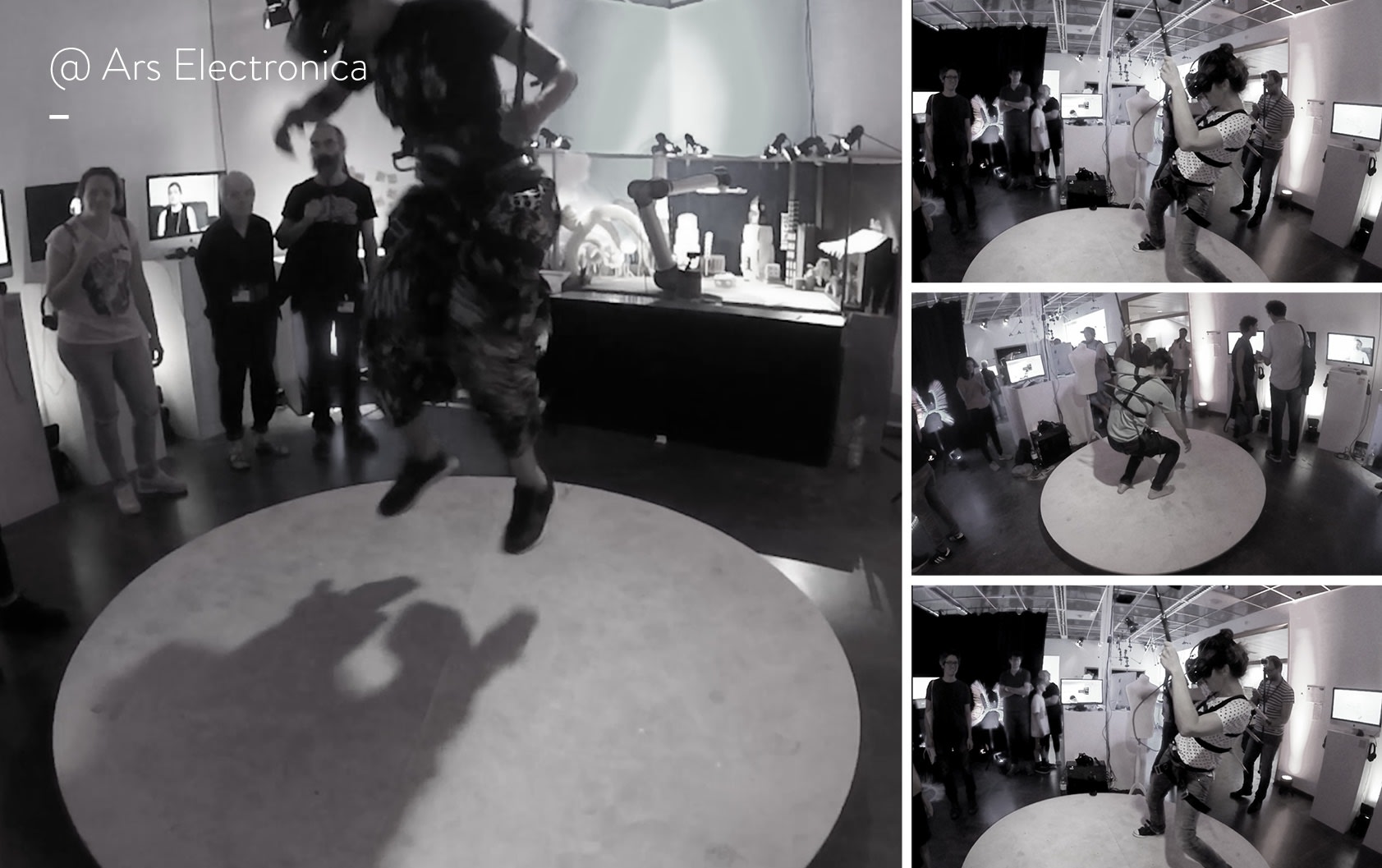
Credits: Wearable designer _ Farid Akmal, Dancer _ Tia Hockey.


